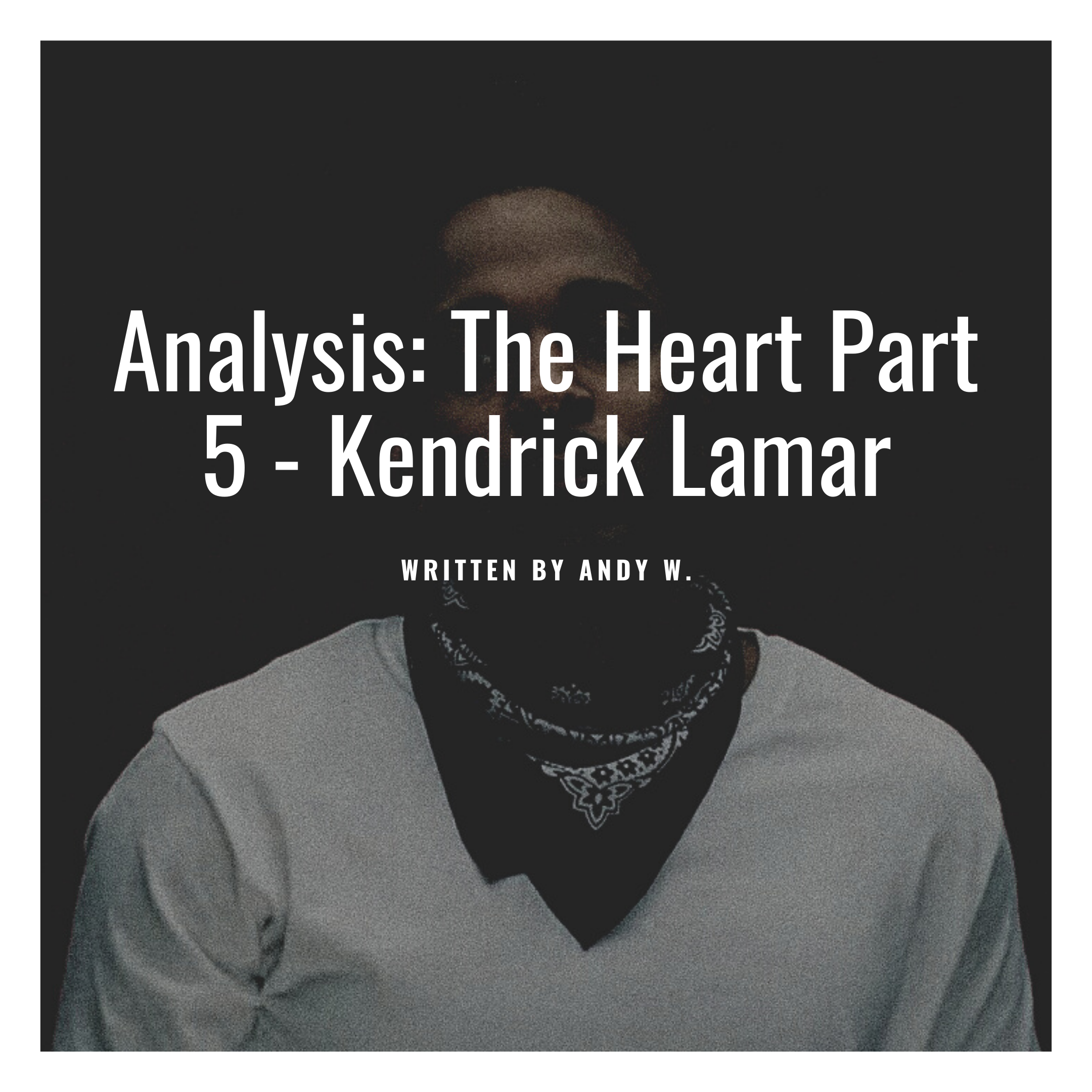He’s back. After five long years since the release of his fourth studio album DAMN., Kendrick Lamar has returned. To classify him only as a musician or rapper seems like a disservice; instead, I prefer to refer to him as an all-around artistic genius. His previous projects, from the critically-acclaimed good kid, m.A.A.d city and To Pimp A Butterfly to the aforementioned Pulitzer prize-winning DAMN., discussed a wide range of topics and themes like systemic racism, societal injustice, and self-empowerment. Most of these amazing eras, sonically and thematically unique from one another, were preceded by a stream-of-consciousness-style single that, together, make up “The Heart” series. The same is true for his upcoming highly-anticipated album Mr. Morale & The Big Steppers, as just yesterday, Kendrick Lamar released “The Heart Part 5”.
The unexpected and atypical release is easily my favorite from “The Heart” series. Unlike ever before, Kendrick released a music video alongside the song. Seemingly simple at first, with Kendrick performing in front of a red backdrop, it quickly becomes apparent that the visual aspect of this song is just as important as the written lyrics. In spoken word format, Kendrick opens the track by discussing how he’s realized, as he’s grown older, that understanding varying perspectives is hugely important in life, and that his perspectives on issues might differ from his listeners’. Suddenly, then, Kendrick ballistically starts his first verse, which explores his upbringing and the lifestyle he grew up trying to escape. This time around, instead of just depicting the atrocities he has seen growing up with gang affiliations as he has done previously, Kendrick begins to critique “the culture” he sees around him that perpetuates and sustains a lifestyle that leads to generational suffering among his community. The chorus follows, utilizing a classic funk sample from Marvin Gaye and introduces the topics to follow, with the lyrics: “I want the hood to want me back / Look what I done for you.”
In verse two, Kendrick demonstrates the reflections he has done on the importance of perspective by utilizing DeepFake technology in the song’s music video to “transform” into various icons whose relevance and important we will discuss later. This visual effect is jarring at first, but serves an important purpose in communicating that Kendrick is stepping outside of himself for this single, and will likely do the same on the following album, evidenced by the “I Am. All of us.” quote that starts the music video. Kendrick continues to discuss “the culture,” describing how desensitization to atrocities and exploitation have normalized inequality, especially in impoverished Black communities. By embodying the likes of O.J. Simpson, Kanye West, Jussie Smollett, and Will Smith, Kendrick argues that these culturally iconic Black men have moved their communities forward despite their shortcomings or the controversies they’ve found themselves in, but that those controversies are ultimately still damaging. Brilliantly, Kendrick pairs each DeepFake with relevant lyrics, such as “Friends bipolar” for Kanye West and “Hurt people hurt more people” for Will Smith.
On verse three, the drums drop out of the instrumental, and Kendrick begins discussing a way out of the systemic and perpetual struggles that his community continues to face: “Celebrate new life when it come back around / The purpose is in the lessons we learnin’ now / Sacrifice personal gain over everything / Just to see the next generation better than ours.” The third verse sees Kendrick transform into Kobe Bryant and Nipsey Hussle, two extremely culturally impactful Black men who were once embroiled in their own controversies only to eventually overcome them to serve change to those around them. “Reflectin’ on my life and what I done / Paid dues, made rules, change outta love / Them same views made schools change curriculums / But didn’t change me starin’ down the barrel of that gun'“ addresses the elephant in the room: untimely demise. Kobe Bryant became a cultural role model before his tragic death, and Nipsey Hussle vowed to better his community after prior gang involvement before being killed. On The Heart Part 5, Kendrick speaks from their perspectives and says that even though they were taken too soon, they should regret nothing because of the positive impact they had on those around them - despite the cost. The song closes on a hauntingly beautiful tribute to Nipsey Hussle from his perspective, and the closing lines “And though my physical won’t reap the benefits / The energy that carry on emits still”, a play on words and striking reference to Emmett Till, whose horrifying lynching was a turning point of the Civil Rights movement in the 1950s - a spot-on personification of paying the ultimate price of tragedy to spark an absolutely necessary movement.
Kendrick Lamar has once again proven his genius artistry with The Heart Part 5, and the most incredible part is that it likely won’t even be on his upcoming album. By defining and outlining both the problems his community faces and ways to fix them by embodying cultural icons, Kendrick sets the tone and precedent that the rumored double album Mr. Morale & The Big Steppers is going to be a very contemplative and dense project. My expectations are now at an all-time high, and I hope Kendrick continues to discuss topics like the separation of art and artists, the misnomer idea of a “cancel culture”, and the importance of art in search of solutions to society’s most pressing issues. This was everything I hoped for in the past five long years, and Friday’s album drop can’t come soon enough.
